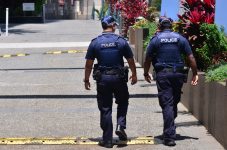NSW Police Adopt a ‘Shoot to Kill’ Policy

On the 13th of November 2015, the world watched in horror as a group of armed men carried out a series of orchestrated attacks at various locations around Paris.
In the wake of these atrocities, the international community has been on high alert; bracing for further attacks.
In line with these developments, NSW police have announced new tactics to deal with potential terrorist threats; with officers being trained to ‘shoot to kill’ instead of first attempting to diffuse the situation.
Similar measures have already been adopted in other countries, including the United Kingdom.
But while police and politicians have billed the move as ‘necessary’ in the current environment, not everyone is convinced.
NSW Police Authorised to ‘Shoot to Kill’
Earlier this week, Acting Police Commissioner Nick Kaldas confirmed that certain police officers had been directed to ‘react differently’ to terrorism threats; namely ‘shoot to kill’ rather than attempt to negotiate.
According to Kaldas, the basis for the directive is that terrorists have a ‘preconceived aim of dying’ and ‘want to kill as many people as they possibly can.’
He emphasised that the approach will only be adopted for potential terrorists – and that police acting in other situations should still attempt to negotiate before making the decision to shoot.
A ‘contain and negotiate’ approach is generally used in situations involving armed offenders, as the priority is to remove as many people from the threat as possible, before negotiating a resolution to the situation.
But Kaldas says that these tactics are unworkable in terrorist situations, because offenders have already made the decision to kill themselves, regardless of the approach taken by police. Accordingly, sparing the lives of terrorists is not a concern.
Speaking to the media, Kaldas said:
‘Experience and statistics make it very clear that the longer you go in those sorts of situations, the more chance there is of it ending peacefully. But certainly in the terrorism situation that’s not the case.’
The change in tactics has been condoned by a number of international agencies and terrorism experts, who say that the latest attacks in France show that we need to change our approach to hostage situations sooner rather than later.
As noted by one political editor:
‘[The threat of suicide terrorists] poses an extremely difficult new reality for security agencies. All the hostages might die if the police attack, but they will certainly die if they do not. Each circumstance will be different, but all will require rapid, life-and-death decisions.’
NSW Police have also been invested with new skills and training to assist them in dealing with terrorist situations, with the Force recently launching a special program for officers based on FBI tactics.
Police have also indicated that they may give officers more weapons to help combat terrorist threats.
Overseas Initiatives
Similar measures have been adopted in the United Kingdom, where Prime Minister David Cameron has directed police and special forces to ‘take out a terrorist to save lives.’ Several other politicians have backed this approach, saying that police should do whatever it takes to save public lives.
But Labour leader Jeremy Corbyn has refused to adopt this view, saying that he is ‘not happy’ with a shoot to kill approach, arguing that such a stance is ‘dangerous and counter-productive.’
He has also suggested that the policy may affect universal freedoms and protections, and has declined to say whether he would ever support military action against terrorists.
Mr Corbyn’s comments sparked outrage amongst politicians, with one frontbencher labelling him a ‘f**king disgrace,’ and others branding him an ‘terrorist apologist.’
Is There a Problem With Shooting to Kill?
The recent Paris attacks have shaken the world, with many coming to the view that potential terrorists need to be stopped by any means necessary.
But is there an inherent danger in handing police more powers and weapons – one which has been highlighted by the numerous cases of police brutality and excessive force which have permeated the media of late.
By giving police the authority to ‘shoot first’ before properly assessing the situation, there is a risk that they will unnecessarily kill people in circumstances that do not involve any terrorism threat at all.
Perhaps even more concerning is that ‘shooting to kill’ could endanger the lives of innocent victims – as some believe it did during Sydney’s Lindt cafe siege.
Some of our previous blogs have discussed the need for greater police training following a spate of fatal police shootings.
Perhaps the current emotional environment calls for calm, a thorough assessment of the proposed policy and the development of appropriate protocols, rather than handing police certain officers the power to immediately ‘shoot to kill’ where they feel there may be a terrorism threat.






